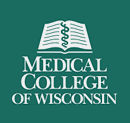预约演示
更新于:2025-05-07
Mitochondrial complex I (NADH dehydrogenase) x SDH2
更新于:2025-05-07
关联
1
项与 Mitochondrial complex I (NADH dehydrogenase) x SDH2 相关的药物作用机制 线粒体复合体I(NADH脱氢酶)抑制剂 [+2] |
在研适应症 |
非在研适应症- |
最高研发阶段临床前 |
首次获批国家/地区- |
首次获批日期1800-01-20 |
100 项与 Mitochondrial complex I (NADH dehydrogenase) x SDH2 相关的临床结果
登录后查看更多信息
100 项与 Mitochondrial complex I (NADH dehydrogenase) x SDH2 相关的转化医学
登录后查看更多信息
0 项与 Mitochondrial complex I (NADH dehydrogenase) x SDH2 相关的专利(医药)
登录后查看更多信息
231
项与 Mitochondrial complex I (NADH dehydrogenase) x SDH2 相关的文献(医药)2025-06-01·Theriogenology
5-Aminolevulinate acid improves boar semen quality by enhancing the sperm mitochondrial function
Article
作者: Adetunji, Adedeji O ; Wang, Shanpeng ; Min, Lingjiang ; Zeng, Xuejun ; Zeng, Wenxian ; Zhu, Zhendong ; Wang, Qi
2025-05-01·Behavioural Brain Research
Ayahuasca reverses ischemic stroke-induced neuroinflammation and oxidative stress
Article
作者: Yonamine, Maurício ; Lins, Elisa Mitkus Flores ; da Silva Joaquim, Larissa ; Barcelos, Pablo Michel Pereira ; Inserra, Antonio ; de Bitencourt, Rafael Mariano ; da Rosa, Lara Rodrigues ; de Souza Ramos, Suelen ; Petronilho, Fabricia ; da Silva, Larissa Espindola ; Chaves, Jéssica Schaefer ; Rezin, Gislaine Tezza ; Farias, Brenno ; Machado, Richard Simon ; Bernardes, Gabriela ; Camilo, Douglas ; Bobinski, Franciane ; de Oliveira, Mariana Pacheco ; Steiner, Beatriz ; de Novais, Linério Ribeiro ; Strickert, Yasmin ; Mathias, Khiany ; da Silva, Mariella Reinol ; Lanzzarin, Everton ; Martins, Helena Mafra ; Santos, Fabiana Pereira
2025-04-01·Bulletin of Mathematical Biology
A Mathematical Exploration of SDH-b Loss in Chromaffin Cells
Article
作者: Cloete, Ielyaas ; Vera-Sigüenza, Elías ; Spill, Fabian ; Nashebi, Ramin ; Rana, Himani ; Kl'uvčková, Katarína ; Tennant, Daniel A
2
项与 Mitochondrial complex I (NADH dehydrogenase) x SDH2 相关的新闻(医药)2024-06-17
·生物探索
引言
线粒体作为细胞内的能量代谢细胞器,其功能障碍与一系列肝脏病变相关。在脂肪肝,肝硬化和肝衰竭等疾病中,均发现线粒体电子传递链 (ETC) 复合物的活性被抑制,线粒体膜电位下降等问题【1-4】。肝脏作为再生能力极强的器官,但是其再生过程中,线粒体的功能尚不明确。
2024年6月14日,德克萨斯大学西南医学中心Prashant Mishra实验室的博士后王逊等在Science杂志发表了题为Metabolic inflexibility promotes mitochondrial health during liver regeneration的研究论文,发现肝脏再生过程中,线粒体通过其代谢的不灵活性,保护再生肝脏健康。
作者首先在分离的再生肝脏线粒体中发现,脂肪酸和酮体的含量增加。肝脏是一个区域性器官,不同区域其再生能力存在差异【5, 6】。作者发现不同区域线粒体中脂肪酸和酮体增加比例与其区域的再生能力呈正相关。通过同位素示踪发现,再生的肝脏中,[U-13C]棕榈酸被代谢产生更多的β-羟基丁酸(M+2)和乙酰辅酶A(M+2),以及在分离的原代的再生肝细胞中,[1-14C]棕榈酸会被代谢产生更多的[14C]二氧化碳。提示肝脏再生过程中,肝脏脂肪代谢能力上升。
脂肪酸氧化主要在线粒体进行,β-氧化过程中,产生NADH和FADH2,随后被线粒体ETC氧化。线粒体ETC由5个复合物组成,为了验证线粒体ETC在其中作用,作者选取 Ndufa9f/f (复合物I),Sdhaf/f (复合物II),Uqcrqf/f (复合物III),Cox10f/f (复合物IV) 和 Atp5f1af/f (复合物V),5个品系老鼠,通过AAV注射,分别特异性地阻断肝细胞的电子传输。作者发现,经过70%肝脏切除术诱导肝脏再生后,野生型和Ndufa9缺失的肝脏再生正常,Sdha,Uqcrq 或Atp5f1a缺失的肝脏无法再生,并且老鼠在术后1-2天内全部死亡。 Cox10缺失的肝脏无法再生,但是老鼠全部存活,同时有大量的脂肪堆积。先前,谢渭芬实验室和惠利健实验室【7】,以及周斌实验室和Jan S. Tchorz实验室【8】研究揭示,胆管细胞在特定条件下,可转分化为肝细胞。经过作者分析,Cox10缺失的肝脏中,胆管细胞经过转分化,成为肝细胞,以支持肝脏再生。
作者为了探寻肝脏中堆积的脂肪来源,使用同位素示踪发现,经过重水(D2O)处理后,肝脏再生过程中,肝细胞内的脂肪并不由其自身合成,而是来自外周脂肪组织的分解。先前丁秋蓉实验室报道【9】,肝脏再生过程中,外周脂肪分解产生的脂肪酸转运进入肝脏,通过影响MIER1蛋白水平,进而影响肝脏再生。β-氧化的重要产物之一是乙酰辅酶A,作者利用代谢组学检测,Cox10缺失的肝脏中,乙酰辅酶A水平显著低于正常肝脏。乙酰辅酶A对组蛋白乙酰化修饰不可或缺。作者利用CHIP-seq发现,组蛋白乙酰化水平下降,导致与细胞周期有关的基因表达下降,进而影响肝脏再生。
肝脏中乙酰辅酶A的来源不止于脂肪酸,葡萄糖和乙酸为什么不能产生乙酰辅酶A?作者发现,脂肪的堆积提升肝细胞的PDK4表达,而PDK4的上升,通过磷酸化PDH,抑制丙酮酸到乙酰辅酶A的转化。脂肪的堆积同时降低肝细胞的ACSS1/2蛋白水平,进而抑制乙酸转化为乙酰辅酶A。为确认葡萄糖来源和乙酸来源的乙酰辅酶A转化是否受到抑制,作者利用同位素示踪,通过[U-13C]葡萄糖或[U-13C]乙酸钠发现,Cox10缺失的肝脏中,乙酰辅酶A(M+2)/ 丙酮酸(M+3)或乙酰辅酶A(M+2)/ 乙酸(M+2)的比值显著下降,提示由葡萄糖或者乙酸合成乙酰辅酶A的能力下降。作者为验证PDK4在其中的作用,利用CRISPR-Cas9技术和抑制剂处理肝脏,发现Pdk4缺失或者被抑制时,线粒体ETC缺失的肝细胞进行增殖。
外周脂肪组织分解,产生的脂肪酸通过β-氧化,支持正常肝细胞增殖。线粒体ETC缺失的肝细胞,无法利用脂肪酸,使其堆积,进而抑制丙酮酸到乙酰辅酶A的转化,使其无法增殖。当PDK4被抑制时,线粒体ETC缺失的肝细胞,通过利用丙酮酸来源的乙酰辅酶A进行增殖。(Credit: Science)
综上所述,本研究发现肝脏再生过程中,肝脏利用其代谢的不灵活性,通过脂质积累,抑制线粒体ETC功能障碍的肝细胞的增殖,以保护肝脏健康。
参考文献
1. C. Koliaki et al., Adaptation of hepatic mitochondrial function in humans with non-alcoholic fatty liver is lost in steatohepatitis. Cell Metab 21, 739-746 (2015).
2. M. Perez-Carreras et al., Defective hepatic mitochondrial respiratory chain in patients with nonalcoholic steatohepatitis. Hepatology 38, 999-1007 (2003).
3. H. Cortez-Pinto et al., Alterations in liver ATP homeostasis in human nonalcoholic steatohepatitis: a pilot study. JAMA 282, 1659-1664 (1999).
4. B. Fromenty, M. Roden, Mitochondrial alterations in fatty liver diseases. J Hepatol 78, 415-429 (2023).
5. L. He et al., Proliferation tracing reveals regional hepatocyte generation in liver homeostasis and repair. Science 371, (2021).
6. Y. Wei et al., Liver homeostasis is maintained by midlobular zone 2 hepatocytes. Science 371, (2021).
7. X. Deng et al., Chronic Liver Injury Induces Conversion of Biliary Epithelial Cells into Hepatocytes. Cell Stem Cell 23, 114-122 e113 (2018).
8. W. Pu et al., Bipotent transitional liver progenitor cells contribute to liver regeneration. Nat Genet 55, 651-664 (2023).
9. Y. Chen et al., Acute liver steatosis translationally controls the epigenetic regulator MIER1 to promote liver regeneration in a study with male mice. Nat Commun 14, 1521 (2023).
https://doi-org.libproxy1.nus.edu.sg/10.1126/science.adj4301
责编|探索君
排版|探索君
文章来源|“BioArt”
End
往期精选
围观
一文读透细胞死亡(Cell Death) | 24年Cell重磅综述(长文收藏版)
热文
Cell | 是什么决定了细胞的大小?
热文
Nature | 2024年值得关注的七项技术
热文
Nature | 自身免疫性疾病能被治愈吗?科学家们终于看到了希望
热文
CRISPR技术进化史 | 24年Cell综述
临床研究
2023-11-27
肺鳞癌(Lung squamous cell carcinoma, LUSC)约占非小细胞肺癌的30%。目前,LUSC的主要治疗手段有化疗,放疗,免疫治疗以及靶向治疗,而目前靶向治疗LUSC治疗效果差,具有严重的不良事件,而免疫治疗的应答率相对较低,急需发现新靶标及治疗新策略。
HsClpP作为线粒体基质中的一种高度保守的丝氨酸蛋白酶,在AAA+ atp酶伴侣ClpX的生理调节下,通过降解错误折叠和受损蛋白负责线粒体蛋白组的稳态。HsClpP在多种肿瘤组织中高表达,在几种类型的癌症中还具有致癌性,其激动剂是目前靶向ClpP抗肿瘤的重要途径。然而,已知HsClpP激动剂由于靶向性不强也可激活肠道微生物的ClpP,在LUSC治疗期间导致了副作用产生,实现HsClpP的选择性激活具有挑战性。
为了获得具有潜在选择性的ClpP激动剂,来自上海药物所和生化细胞所的研究团队使用基于荧光强度的蛋白酶活性测定系统,对包含3,896种化合物的小分子库进行高通量筛选发现BX471(已知CCR1选择性拮抗剂)在HsClpP上表现出较好的激活作用。通过对其结构优化,得到了ZK11和ZK53;与BX471相比,ZK53在HsClpP上的活性显著提高,对HsClpP水解α-酪蛋白的EC50为1.37 μM,且ZK53对SaClpP和大肠杆菌ClpP (EcClpP)的激活较小,表明ZK53是一个具有选择性的HsClpP激动剂,对细菌ClpP的影响很小。
研究人员对人ClpP与ZK53配合物的晶体进行了解析,发现ZK53中的3,5-二氟苯基基序与HsClpP中的W146侧链之间存在π-π堆叠效应,这种效应稳定了ZK53与HsClpP的结合。而SaClpP中相应的I91不可能提供类似的效果,从而削弱了ZK53与SaClpP的结合。
为了验证结构中的互作,他们将HsClpP中的W146突变为I146,并构建了SaClpP的I91W突变体,发现ZK11和ZK53对W146I HsClpP的激活明显减弱,而ZK11和ZK53对I91W SaClpP的激活明显增强。为了进一步探究活性的变化是否由于激动剂与靶蛋白酶之间的结合亲和力的变化所引起的,他们利用DSF实验(差示扫描荧光法)再次明确了ZK53与 HsClpP突变体结合显著降低,而与I91W SaClpP的结合则增加。上述结果表明ZK53在HsClpP上的选择性活化主要依赖于配体中二氟苯基部分与HsClpP中W146残基之间的疏水π-π堆叠效应。
为了探究HsClpP的激活是否能够在LUSC中同样表现出抗癌作用,他们将多西环素(Dox)诱导的Y118A HsClpP慢病毒转入LUSC细胞中,并在克隆实验中评估HsClpP激活的长期效应。如上图所示,Dox诱导的Y118A HsClpP过表达阻碍了LUSC细胞的克隆增殖能力。此外,Y118A HsClpP过表达显著抑制SK- MES-1、H226和H1703 LUSC细胞系的细胞增殖,抑制Balb/c裸鼠异种移植H1703细胞的肿瘤生长。这些数据表明异常激活HsClpP可以抑制LUSC细胞的增殖和肿瘤发生,使其成为一种有希望的LUSC治疗策略。
MTT实验中ZK11和ZK53以剂量依赖的方式抑制LUSC细胞活力,而ZK53表现出比ZK11强4倍的抑制作用。此外,ZK53不会诱导非恶性细胞(如人肺成纤维细胞MRC-5细胞)凋亡。提示HsClpP激动剂ZK53对LUSC细胞具有很强的抗增殖作用,并且其在正常肺组织中具有较低的细胞毒性。
由于HsClpP的过表达会扰乱线粒体的稳态,他们评估了ZK53对LUSC细胞中线粒体蛋白质组的影响。ZK53以剂量依赖的方式触发多个线粒体呼吸链蛋白复合物的大量减少,包括NDUFB8、SDHA、UQCRC2和COXIV等,从而扰乱线粒体蛋白的稳态;将ClpP敲低则阻止了ZK53诱导的线粒体蛋白不受控制的降解,表明ZK53在LUSC细胞中对线粒体蛋白的降解依赖于HsClpP。研究者还测试了ZK53处理对线粒体ROS的影响,并观察到其在LUSC细胞中显著增加。总体来看,ZK53靶向HsClpP并导致LUSC细胞线粒体功能严重失调。
为了更好地了解ZK53对LUSC细胞系抗增殖作用的分子机制,他们对1 μM ZK53处理后的H1703细胞进行了转录组全RNA测序分析(RNA-seq)。KEGG富集分析显示,ZK53处理显著下调了E2F。进一步qPCR分析证实H1703细胞中ZK53存在时,E2F靶基因的转录量呈剂量依赖性降低。为了进一步验证ZK53对E2F的抑制作用,他们使用免疫印迹法检测Rb磷酸化和负责Rb磷酸化的蛋白水平,发现ZK53处理导致H1703细胞中Rb上的S795、T826和S807/811磷酸化显著降低,是E2F靶基因减少的部分原因。进一步,为了研究ATM激活在ZK53处理的H1703细胞中的作用,他们通过KU-55933特异性抑制ATM活性。KU-55933处理抑制了ZK53处理导致的p-ATM磷酸化升高,降低了ATM的两种底物p-CHK2和γ-H2AX,说明ZK53诱导的p-CHK2和γ-H2AX的增加主要是通过ATM信号通路介导的。此外,经KU-55933和AZD1390这两种ATM抑制剂处理都显著减轻了ZK53对H1703细胞的抗增殖作用,这表明ZK53激活ATM介导的DDR并阻碍H1703细胞的增殖。
在H1703细胞接种裸鼠的体内模型中,可以观察到ZK53治疗组的肿瘤体积和重量比对照显著减小;Ki67染色显示,ZK53治疗显著抑制了肿瘤中LUSC细胞的增殖。为了显示研究的临床相关性,他们还在基因工程小鼠模型上评估了ZK53的抗癌作用,通过对LUSC(肺鳞癌)生物标志物p40、SOX2、KRT5和LUAD(肺腺癌)生物标志物TTF1的组织病理学分析和免疫染色分析,发现ZK53处理显著抑制了这些小鼠LUSC的发展,而对小鼠LUAD的发展有轻微的抑制。Ki67免疫染色结果进一步显示,ZK53处理后LUSC细胞增殖明显受到抑制。这些结果突出了HsClpP激动剂ZK53在体内对LUSC细胞肿瘤生长的潜在治疗作用。
综上,这项研究开发了一种具有新颖骨架结构的HsClpP选择性小分子激动剂ZK53,其通过靶向激动肺鳞癌细胞内的HsClpP,干扰线粒体正常功能,同时通过抑制E2F靶点和激活ATM介导的DDR,在LUSC细胞中引起细胞周期阻滞,抑制LUSC细胞增殖。该团队还开展了通过激动HsClpP抑制肺鳞癌发生发展的抗肿瘤活性研究,为肺鳞癌的治疗提供有前景的策略。
参考文献:Lin-Lin Zhou, Tao Zhang , Yun Xue, Chuan Yue, et al. Selective activator of human ClpP triggers cell cycle arrest to inhibit lung squamous cell carcinoma. Nat Commun. 2023 Nov 3;14(1):7069. doi: 10.1038/s41467-023-42784-4.
内容来源于网络,如有侵权,请联系删除。
免疫疗法
分析
对领域进行一次全面的分析。
登录
或

Eureka LS:
全新生物医药AI Agent 覆盖科研全链路,让突破性发现快人一步
立即开始免费试用!
智慧芽新药情报库是智慧芽专为生命科学人士构建的基于AI的创新药情报平台,助您全方位提升您的研发与决策效率。
立即开始数据试用!
智慧芽新药库数据也通过智慧芽数据服务平台,以API或者数据包形式对外开放,助您更加充分利用智慧芽新药情报信息。
生物序列数据库
生物药研发创新
免费使用
化学结构数据库
小分子化药研发创新
免费使用
